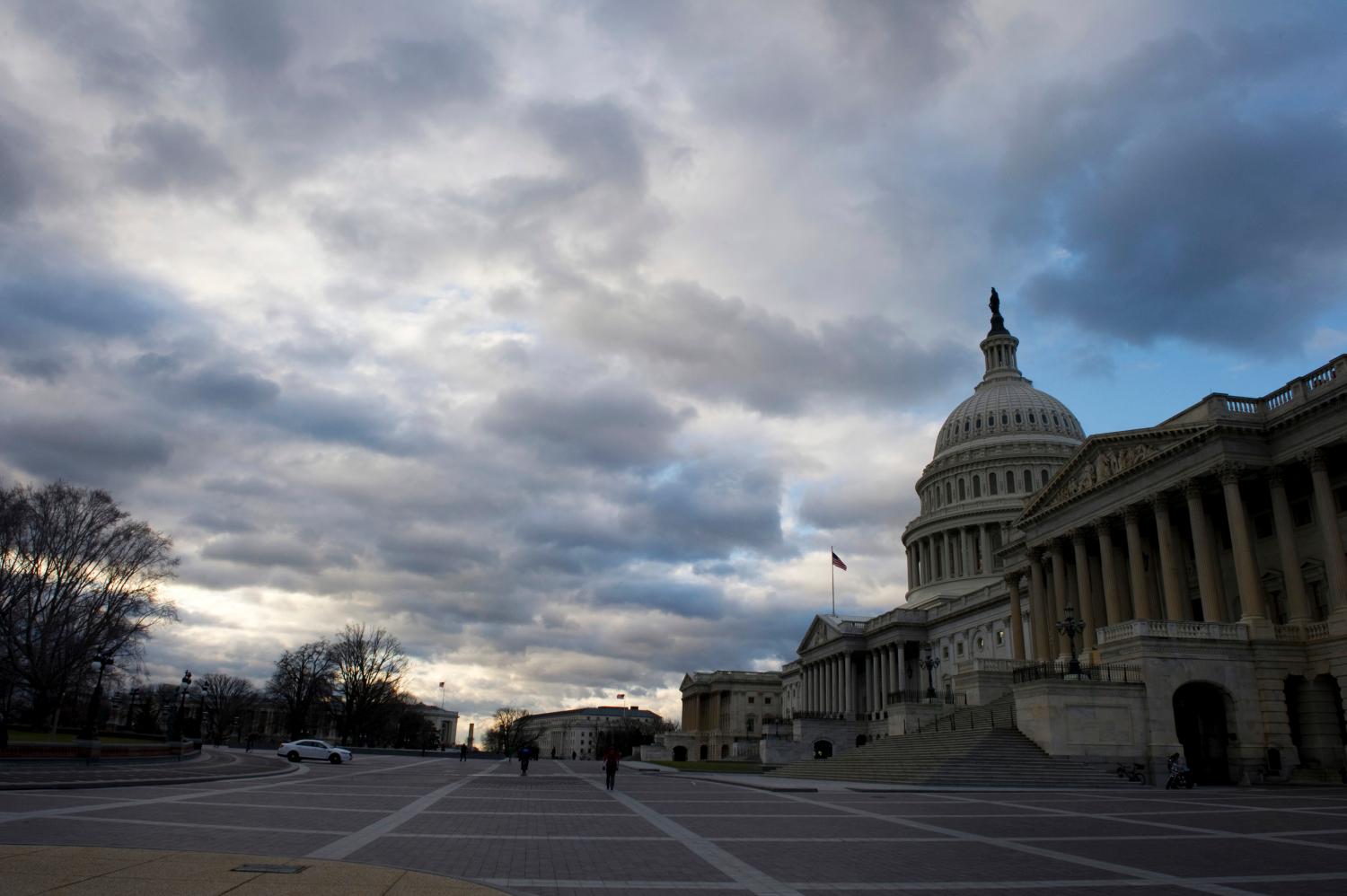Monday morning quarterbacking of how the International Monetary Fund (IMF) and the Clinton Administration handled the Southeast Asian crisis has become a favorite pastime in Washington. And a strange coalition of political bedfellows in Congress now threatens the replenishment of the IMF’s reserves—the $3.5 billion Congress failed to approve last year, plus another $14.5 billion in new funds.
A close look at what caused the crisis, and at the IMF and the Administration’s responses, suggests that Asia’s troubles are not insoluble and that the IMF is not, as some critics claim, obsolete. What’s needed is a three-step program of triage, liquidation or merger, and workouts for troubled corporations and banks. These will begin restoring confidence to the region and help prevent future crises. Quick action is critical, however, to prevent the Asian flu from spreading.
POLICY BRIEF #30
To say that the Asian currency and economic crisis surprised the world is an understatement. The Asian economic miracle had become the stuff of legend—the transformation of once poor countries like Indonesia, Malaysia, Thailand, and South Korea in less than a generation into economies on the threshold of realizing a Western middle class standard of living. The countries in the region had high rates of saving and investment, hard working and impressively educated labor forces, and lean governments committed to fiscal prudence. How did it all unravel so quickly?
Neither of the two most popular explanations is, by itself, fully satisfactory. The conventional macroeconomic diagnosis pins the blame on overvalued exchange rates that effectively were pegged to a rising dollar, pricing exports out of world markets while enabling local citizens to buy goods from other countries at increasingly attractive prices. The countries had to finance their large current
Figure 1: Southeast Asian Current Account Balances And Currency Movements
| Nation | Current Account Balance | Currency Decline | |
|---|---|---|---|
| As Percent of GDP | Relative to US Dollar (%) | ||
| 1996 | 1997 | 7/1/97 – 2/2/98 | |
| Indonesia | -3.4 | -4.5 | -76 |
| Malaysia | -6.3 | -9.9 | 39 |
| Philippines | -4.5 | -2.9 | -36 |
| Singapore | 15.2 | 16.2 | -16 |
| S. Korea | -4.9 | -2.7 | -43 |
| Taiwan | 4.0 | 1.8 | -17 |
| Thailand | -7.9 | -4.2 | -49 |
Source: J. P. Morgan, World Financial Markets, First Quarter 1998
account deficits by borrowing from abroad, much of it in short-term maturities.
The numbers provide much support for this story, but there are some gaps. Figure 1 shows, for example, that the countries that have suffered the greatest currency collapses indeed had sizeable current account deficits compared to local gross domestic product (GDP). But these figures alone can’t explain how countries with current account surpluses—like Taiwan and Singapore—also have seen their currencies caught in the undertow. Moreover, three of the countries that have suffered currency troubles—South Korea, the Philippines and Thailand—had sharply lower current account deficits in 1997 than they did in 1996.
If current account balances alone can’t explain the crisis, then the data on short-term foreign indebtedness (Figure 2) helps fill in some other pieces of the puzzle. Three of the countries hardest hit by the crisis—Indonesia, South Korea,
Figure 2: Southeast Asian Foreign Debt and Reserves in Billions of Dollars
| Nation | Total Debt | Short-Term Debt |
Reserves |
|---|---|---|---|
| China | 152 | 42 | 141 |
| Hong Kong | … | … | 75 |
| Indonesia | 131 | 27 | 28 |
| S. Korea | 155 | 60 | 17 |
| Malaysia | 39 | 14 | 24 |
| Philippines | 58 | 15 | 9 |
| Singapore | … | … | 88 |
| Taiwan | 46 | 29 | 81 |
| Thailand | 102 | 32 | 20 |
Source: J. P. Morgan, World Financial Markets, First Quarter 1998
and Thailand—had short-term foreign debt outstanding at the end of 1997 that approached or exceeded the country’s level of hard currency reserves. But this was also true of the Philippines, where the currency has not fallen nearly as far. Meanwhile, how does one explain the fact that Taiwan—which at year end 1997 had currency reserves almost three times its level of short-term foreign debt—also suffered an erosion in the value of its currency?
The other explanation for the crisis, spelled out recently by MIT Professor Paul Krugman, is that the Southeast Asian flu was brought on by the collapse of banking systems in the region. The villain in this story is crony capitalism—the close links between Southeast Asian banks, their major borrowers, and the region’s governments, which often directed where loans should be made and thus implicitly guaranteed them. A large influx of foreign investment, in search of high returns and encouraged by glowing reports about the Asian miracle, helped finance this profligacy, which manifested itself in glitzy office buildings and plant expansions that could never have recovered their costs. With the markets awash in cash, asset prices spiraled, only to eventually burst—first in Thailand and then in other markets as holders of domestic currencies lost faith and ran to the dollar.
There is no question that the weaknesses in the region’s banking systems contributed to the loss of confidence as currencies began falling. But there is more to the Asian crisis than a problem with its banks. Asia was the focus of irrational exuberance. Though the term was coined by Fed Chairman Alan Greenspan for the U.S. financial markets, it is much more accurately applied to Asia. Virtually everyone concerned—leaders and residents of the affected countries, and foreign investors—played their part.
The IMF and Its Critics
At the end of the day, it is unnecessary to choose between the chicken and the egg—currency misalignment and flaws in the banking system. Both were at fault and both are in the process of being corrected, currencies at the behest of the market, and banking systems at the behest of the IMF. However, the results, at least so far, have been hardly ideal or free from criticism.
Despite the IMF’s willingness to lend hard currency to countries that are short of it, Figure 1 illustrates that the currencies of the most affected countries have plunged deeply and almost certainly are well below any long-term equilibrium level. It is difficult to believe, for example, that the Indonesian rupiah—the currency hardest hit—is truly worth less than one-fifth of its value relative to the dollar just six months ago. At this level, according to recent press reports, roughly 90 percent of the companies listed on the Indonesian stock exchange—companies that were viable only six months ago—are now technically bankrupt. The problem, in a nutshell, is that the market is susceptible to precipitous and contagious declines, even when the IMF purports to come to the rescue.
In part, confidence has been undermined because government officials in the affected countries have vacillated about accepting the IMF’s conditions. Another reason is that the IMF itself is now under attack, especially in this country, from both the right and the left. The IMF is charged with failing to warn investors that the crisis was about to occur. It is blamed for planting the seeds of the Southeast Asian crisis by rescuing Mexico in 1994-95, thereby lulling banks and other investors outside the developed world into believing that they couldn’t lose. And it is accused of imposing conditions on its lending that arguably are making matters worse, in the process straying far from its original mission, which was to provide short-term liquidity to countries having balance-of-payment difficulties.
The critics may have a point about the IMF’s failure to warn. But they fail to note that a number of sophisticated analysts had been raising red flags, cautioning that the combination of pegged exchange rates and inadequate banking supervision one day would lead to a crisis. As MIT economist Lester Thurow has recently suggested, it is one thing to say that a financial earthquake is likely to happen, as Thurow, to his credit, warned several years ago. It is quite another to predict exactly when. Economists, like geologists, are much better at doing the first than the second. In any event, IMF officials—who were understandably worried about triggering a crisis themselves with more visible public alarms—claim that they were privately warning Asian leaders, well before the crisis, of the economic perils they faced from lax banking practices and inadequate supervision.
The assertions that the Mexican rescue package made the Southeast Asian crisis inevitable—and, in turn, that the IMF rescues of Asian countries now may plant the seeds for future crises—go too far. To be sure, any lender-of-last resort loan entails a moral hazard to the extent it lets the beneficiaries of the loan escape any losses. But there is no assurance against currencies becoming overvalued or speculative bubbles forming even without any bailout expectations. Moreover, the Mexican experience surely must have demonstrated to Asian governments and investors in their stock markets that they would not be insulated against loss. After all, the Mexican government had to adopt a wrenching macroeconomic belt tightening program (that itself has been the subject of heavy criticism) as a condition for getting its IMF loans, while investors in peso-denominated securities suffered major losses when the peso was devalued. More broadly, the IMF’s harshest critics, now calling for its abolition, fail to come to grips with how much farther troubled currencies would fall if there were no international lender-of-last-resort. The deeper foreign currencies plunge in value, the more difficulty U.S. firms would have competing with exporters from those markets both here and abroad. The worldwide economic costs of any particular crisis would be potentially far greater, not to mention the political and security risks of further economic collapse in such countries as South Korea.
There are at least two valid critiques, however, of IMF and Administration policy during the crisis. From publicly available reports, the IMF was initially too tough in requiring government budget tightening, which not only contributed to the downturns in local economies but ignored the fact that budgets were not a problem in the first place. The Fund appears to have since backed off from prescribing its stiff fiscal medicine. Whether the Fund also has erred by insisting on monetary tightening is a much tougher call. Higher interest rates are required for countries to attract investors in their currencies. In theory, without those higher interest rates, the stricken currencies might free-fall, increasing the debt burden in domestic currency of borrowers within the countries who are paying off their foreign currency obligations. In fact, though, the higher rates have depressed local economies without preventing major erosions in currency values.
The second critique is that the Fund and the U.S. government have gone too easy on the banks. In the case of Korea, for example, foreign banks have demanded local goverment guarantees on bank loans before rolling them over, without forgiving any amounts due. To be sure, some of the banks have added modestly to their loan loss reserves to account for possible future writeoffs, while claiming to be charging interest rates that do not fully reflect the risk of the loans rolled over. Still, the new rates reportedly are higher than those the banks were previously charging.
The hard line taken by the banks is short-sighted. It risks a political backlash in the countries where they are now lending, while providing powerful political ammunition to those in this country who oppose authorizing any new funds for the IMF. If the IMF funding is not approved by Congress, other countries may not approve their contributions either, potentially shrinking the world’s economic safety net by so much that it will be useless in a future crisis, or even in containing the current one. That’s not in the banks’ interest, or in anyone else’s.
A Way Out
Arguments about IMF and Administration policy aside, the real challenge now is to find ways of restoring confidence in Asian economies and currencies as quickly as possible. If we delay, the crisis could spread to other regions of the world, such as Latin America and emerging market countries, where currencies may buckle as Southeast Asian goods begin flooding world markets at reduced prices. At the same time, it is essential that any measures taken do not invite future crises nor unduly threaten the political and foreign relationships that the United States, and the West generally, have with the affected countries. There is growing resentment within those countries against the United States and the West for imposing tough reforms as a price for assistance.
In the affected Asian economies, even at some hypothetical equilibrium exchange rate, many borrowers do not have assets that meet their liabilities. If these were U.S. firms, the solution would be readily handled by Chapter 11 of our bankruptcy laws, which enable creditors either to liquidate the company, accept a writedown of some of their debt, or convert a portion of their debt into equity so that the restructured firm can survive. The same thing needs to be done—but on a massive scale and as rapidly as possible—in Southeast Asia, as well as in Japan, where the banking system is in dire straits.
The Asian plan must be sensitive, however, to the politically powerful accusation that liquidation of insolvent firms and banks is allowing foreign investors to take advantage of fire sale prices. To be clear, increased foreign direct investment remains necessary in these countries. But in the current environment, there is considerable risk that our long-term political interests in these countries will be jeopardized if their citizens perceive foreign investors as opportunistic.
The proposed strategy has three parts:
First, each country should establish a mechanism for quickly performing triage on all firms (above a certain size, for administrative practicality) and banks facing bankruptcy, using an exchange rate assumed to be some significant level below the rate before the crisis began, but above current, excessively depressed market levels. In principle, the rates should reflect the long-run competitive position of the economies in the region, or failing that, some arbitrary level—say, halfway between their current and pre-crisis levels.
Second, firms and banks that are nonetheless insolvent under this exchange rate by some threshold margin (such as negative net worth in excess of 20 percent of assets) should be subject to a presumption of liquidation or forced merger, unless creditors quickly accept an equity-for-debt swap. Liquidation or merger would be accomplished by the surviving banks or creditors themselves in the case of private borrowers, or in the case of deeply insolvent banks, by the equivalent of the Resolution Trust Corporation (RTC) that was set up in this country to clean up the savings and loan mess. The reason not to compel liquidation or merger of all insolvent firms and banks is to avoid the political dangers associated with a massive fire sale of all assets held by troubled firms. Nonetheless, to make more productive use of the assets of bankrupt firms, there should be a presumption that deeply insolvent entities (or their assets) will be taken over by those unburdened by crushing debt.
Third, all insolvent firms and banks not subject to liquidation, as well as banks with capital below regulatory standards, should be eligible for Chapter 11-type workouts, with lenders required to exchange some portion of debt for equity to give the restructured firm a reasonable chance of survival. Again, banks and other lenders would do this themselves for their borrowers, or an appropriate ministry or new government entity could function as the equivalent of a bankruptcy court to quickly impose a restructuring plan. The Finance Ministry (or its equivalent) would presumably carry out this function for potentially viable banks. This would mean that foreign banks would automatically take haircuts. In lieu of an equity-for-debt exchange, governments could extend guarantees on the loans once they’ve been partially forgiven. To soothe ruffled feathers abroad: the restructuring plans could provide local firms with options to later repurchase at least some of the equity after creditors have earned some reasonable return on their new equity.
Significantly, this plan does not envision local governments infusing equity into troubled concerns, as the Japanese government has proposed for its banks, and as the Reconstruction Finance Corporation did in the United States during the Depression. Putting government money on the line—other than to pay off depositors and prevent a bank run—would only perpetuate the kind of excessive government micromanaging of the economy that helped get these countries into trouble in the first place.
More importantly, there is no need for a grand, new international bankruptcy agency or mechanism, as some have proposed. The debt problems are internal to each country and, unlike the Mexico crisis, stem from borrowings by the private sector rather than by governments. Of course, once a common approach is applied to insolvent Asian entities, important international precedents will have been set. To be sure, enunciating these three principles is a lot simpler than implementing them. Southeast Asian countries have poorly developed bankruptcy laws, if any. But that needn’t be a deal-killer. Each of the countries should quickly pass simple bankruptcy legislation (if none exists now), giving time-limited emergency powers to relevant government authorities or newly created entities managed by individuals respected for their financial acumen.
While it is critical that the affected countries take the lead, the IMF (if necessary, pressed by U.S. government leaders) should add implementation of the program as a condition to providing its lending support. Furthermore, the IMF, World Bank and possibly other outside experts could provide technical assistance with any triage, liquidation, and workout functions. It is important that the United States, in particular, not be the key interlocutor. In addition, it is essential that the remedial mechanisms be set up quickly and carry out their job on a potentially very large scale. That could require extensive outside assistance, the relatively small cost of which would be well worth the benefit.
An active liquidation and workout program would restructure entire economies, while achieving four important goals.
- It would help stop the growing cascade of failures, which is driving down both the economies and their currencies.
- It would help restore confidence in the economies by assuring a role for new foreign investment, helping to better assure payback of at least some existing debts. That would provide stronger incentives for fresh equity to return to the countries, while offering the prospect of upside gains to former creditors who exchange their debt for equity.
- It would associate the IMF with a program of active and flexible aid rather than with the rigid austerity measures that have been so heavily criticized here and abroad.
- And it would send a message to all creditors that the days of too big to fail are over and that pain must be widely shared if all are to feel comfortable with the outcome. That is a critical message for Congress, in particular, to hear in order to better assure the refunding of the IMF, a step that is also sorely needed to help restore confidence to investors around the world.
The Brookings Institution is committed to quality, independence, and impact.
We are supported by a diverse array of funders. In line with our values and policies, each Brookings publication represents the sole views of its author(s).




